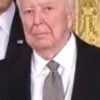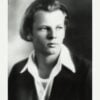Willem de Kooning, a prominent artist of the 20th century, was born in Rotterdam, Netherlands in 1904. He is best known for his contributions to the Abstract Expressionism movement that emerged during the post-World War II era. De Kooning’s distinctive style and relentless dedication to his craft helped redefine modern art and solidify his place as a true master.
In this article, we will explore the life and artistic journey of Willem de Kooning, delving into his early influences, the emergence of Abstract Expressionism, his signature style, notable works and exhibitions, and his lasting impact on the world of modern art. We will also discuss de Kooning’s artistic legacy, how his work can be experienced today in collections and museums, and the books and documentaries that have been created to shed light on his life and career.
Join us as we uncover the enduring influence of Willem de Kooning’s art and take a closer look at the man behind the masterpieces.
Early life and artistic influences
De Kooning’s interest in art began at an early age, as he was exposed to various forms of creative expression through his parents and siblings. His mother, a skilled craftswoman, shared her love of textiles and patterns with her son, while his father, a professional decorator, introduced him to the world of design and architecture. By the age of 12, de Kooning was already apprenticing at a commercial art and design firm in Rotterdam.
De Kooning’s early artistic influences were diverse, ranging from the Old Masters of European art, such as Rembrandt and Vermeer, to the more contemporary works of artists like Vincent van Gogh and Henri Matisse. After moving to the United States in 1926, de Kooning immersed himself in the vibrant New York City art scene, where he became acquainted with the works of Picasso, Kandinsky, and other modernist artists.
This exposure to various artistic styles and techniques would serve as a foundation for de Kooning’s own artistic identity, which would continue to evolve throughout his life.
The emergence of Abstract Expressionism
The 1940s marked a turning point in the art world, as the devastation of World War II gave rise to a new movement known as Abstract Expressionism. This movement sought to break free from the constraints of traditional artistic styles, embracing the chaos of the human experience and the power of raw emotion.
De Kooning, along with fellow artists such as Jackson Pollock and Mark Rothko, would become key figures in the development and popularization of Abstract Expressionism. Their artwork pushed the boundaries of what was considered “acceptable” in the art world, often resulting in bold, unconventional pieces that were met with both praise and controversy.
As a prominent figure in the Abstract Expressionist movement, de Kooning would go on to create some of the most iconic and influential works of the 20th century.
De Kooning’s signature style
At the heart of de Kooning’s signature style is a fusion of abstraction and figuration, which he achieved by experimenting with various techniques, mediums, and subject matter. His approach to painting was characterized by a constant push and pull between the two, resulting in a dynamic, evolving style that was uniquely his own.
One of the key elements of de Kooning’s style was his use of bold, gestural brushstrokes, which added a sense of movement and energy to his work. He also frequently incorporated collage elements, combining various materials such as paper, fabric, and even found objects within his paintings.
When it came to subject matter, de Kooning was known for his depictions of the female form, which he rendered in a variety of styles ranging from abstract to more representational. His exploration of the female figure would become a recurring theme throughout his career, with his most famous series, the “Women” paintings, garnering significant attention and acclaim.
Notable works and exhibitions
Over the course of his career, de Kooning produced an incredible body of work that spanned various styles, mediums, and subject matter. Some of his most notable pieces include:
- “Excavation” (1950): Considered one of de Kooning’s greatest masterpieces, “Excavation” is a large-scale, abstract composition that showcases his signature gestural brushstrokes and collage-like approach to painting.
- “Woman I” (1950-1952): As the first painting in his groundbreaking “Women” series, “Woman I” is a prime example of de Kooning’s ability to merge abstraction and figuration. The piece features a distorted, confrontational female figure that is both alluring and unsettling.
- “Seated Woman” (1940): An early example of de Kooning’s exploration of the female figure, “Seated Woman” showcases his evolving style and the influence of his European artistic roots.
De Kooning’s work has been exhibited in numerous solo and group exhibitions throughout the world, with his first major retrospective taking place at the Museum of Modern Art in New York City in 1968. This exhibition solidified his status as a leading figure in the world of modern art and helped to introduce his work to new audiences.
The impact of de Kooning’s art on modern art
De Kooning’s innovative approach to painting and his contributions to the Abstract Expressionist movement have had a profound impact on the world of modern art. His work challenged traditional notions of what art could and should be, paving the way for future generations of artists to break free from convention and explore new artistic territories.
Many artists, both contemporary and historical, have cited de Kooning as a significant influence on their own work, including the likes of Robert Rauschenberg, Jasper Johns, and Frank Stella. De Kooning’s legacy can be seen in the continued exploration of abstraction and figuration in modern art, as well as the continued fascination with the human figure as a subject of artistic inquiry.
De Kooning’s artistic legacy
Even after his death in 1997, de Kooning’s artistic legacy continues to thrive, as his work remains highly sought after by collectors, museums, and art enthusiasts alike. His paintings can be found in the permanent collections of some of the world’s most prestigious institutions, including the Museum of Modern Art in New York, the Tate Modern in London, and the Stedelijk Museum in Amsterdam.
In addition to his artwork, de Kooning’s impact can be felt through the countless artists who have been inspired by his innovative approach to painting, as well as the numerous art movements and trends that have emerged in the wake of Abstract Expressionism.
Exploring de Kooning’s artwork today: Collections and museums
For those interested in experiencing de Kooning’s artwork firsthand, there are many museums and galleries around the world that house his work. Some of the most notable institutions include:
- The Museum of Modern Art (MoMA), New York: Home to several of de Kooning’s most famous works, including “Excavation” and “Woman I,” MoMA offers a comprehensive overview of his career and contributions to modern art.
- The Guggenheim Museum, New York: This iconic institution boasts an impressive collection of de Kooning’s work, with pieces on display that span various periods of his career.
- The Hirshhorn Museum and Sculpture Garden, Washington, D.C.: As part of the Smithsonian Institution, the Hirshhorn Museum houses a significant collection of de Kooning’s work, including paintings, sculptures, and drawings.
By visiting these and other institutions, art enthusiasts can gain a deeper appreciation for de Kooning’s artistic journey and the impact of his work on the world of modern art.
Books and documentaries on Willem de Kooning
For those looking to learn more about the life and career of Willem de Kooning, there are several books and documentaries available that provide valuable insight into his artistic journey. Some notable titles include:
- “De Kooning: An American Master” by Mark Stevens and Annalyn Swan: This comprehensive biography delves into de Kooning’s personal and professional life, offering an in-depth look at his artistic evolution and the forces that shaped his work.
- “Willem de Kooning: Reflections in the Studio” by Edvard Lieber: This intimate portrait of de Kooning features a series of interviews and conversations with the artist, offering valuable insights into his creative process and artistic philosophy.
- “De Kooning: A Retrospective” by John Elderfield: Published in conjunction with MoMA’s 2011 retrospective exhibition, this catalog features essays and images that explore de Kooning’s career and the development of his signature style.
In addition to these resources, several documentaries have been produced that offer a closer look at de Kooning’s life and work, including “Willem de Kooning: The Painter” (1984) and “De Kooning on de Kooning” (2004).
Willem de Kooning’s artistic journey is a testament to the transformative power of art and the lasting impact that one individual can have on the world. His contributions to the Abstract Expressionist movement and his relentless exploration of the boundaries of painting have left an indelible mark on the history of modern art.
As we continue to celebrate and study the work of this modern master, we gain a deeper appreciation for the complexities of the human experience and the power of artistic expression to challenge, inspire, and provoke. Through his work, de Kooning’s artistic journey lives on, inviting us all to engage with the world in new and exciting ways.























